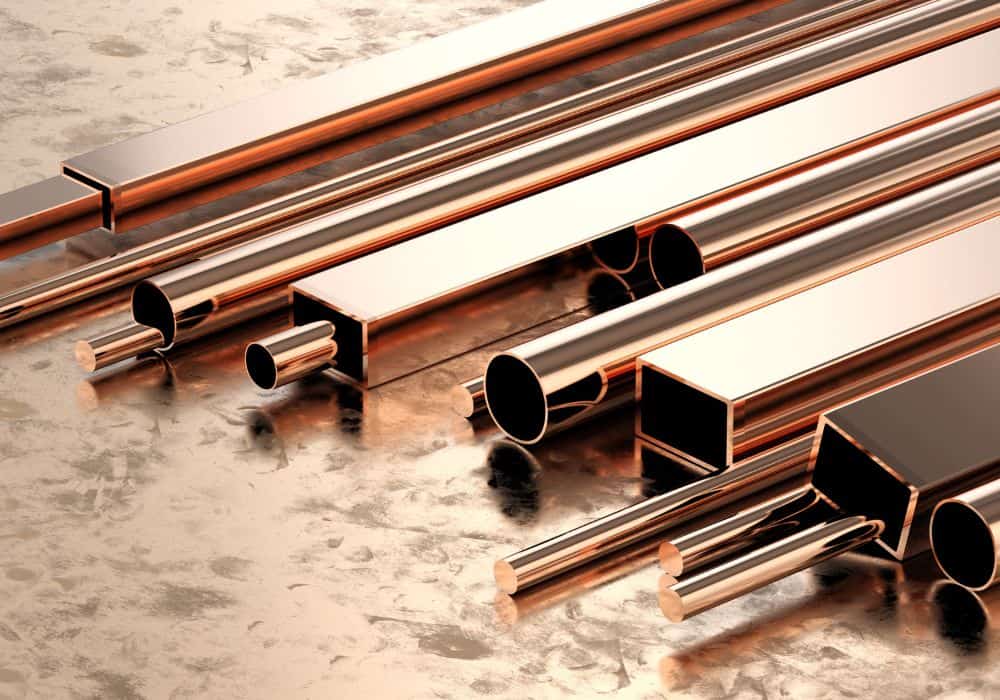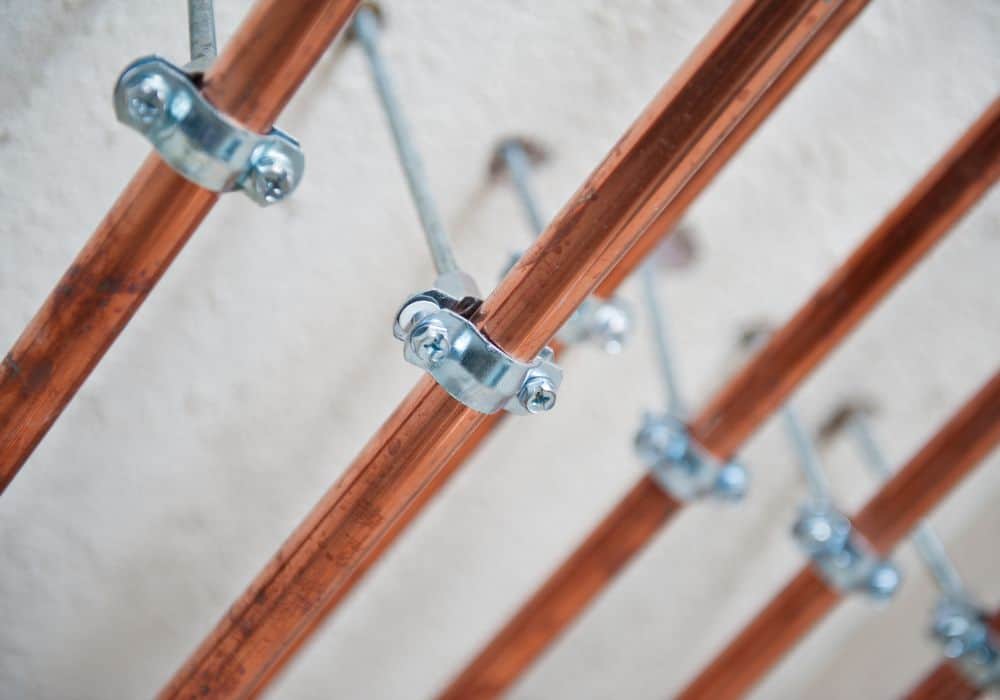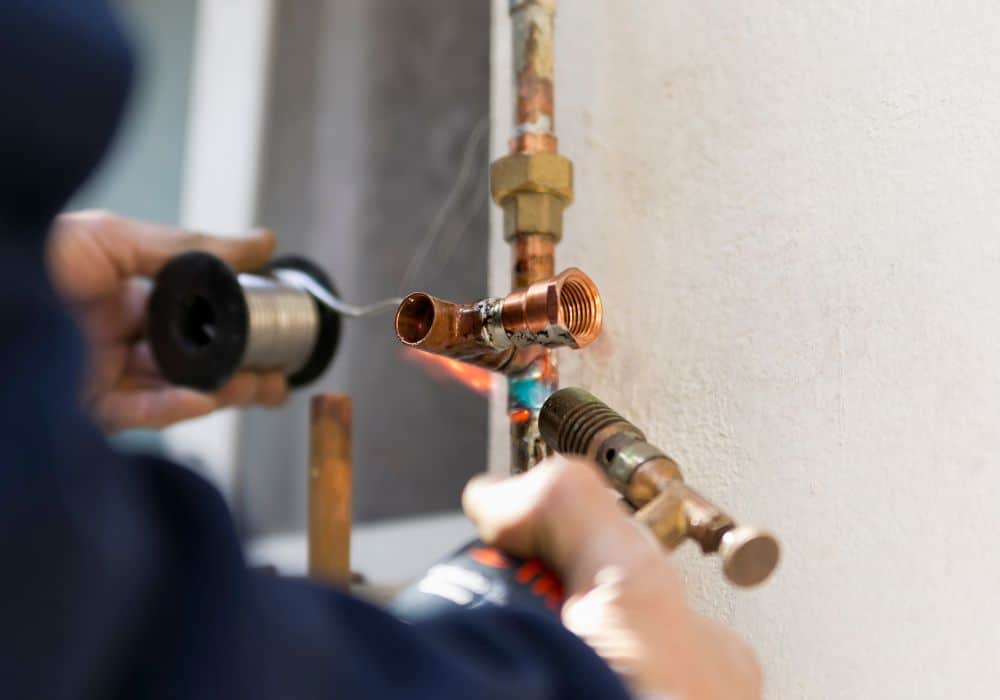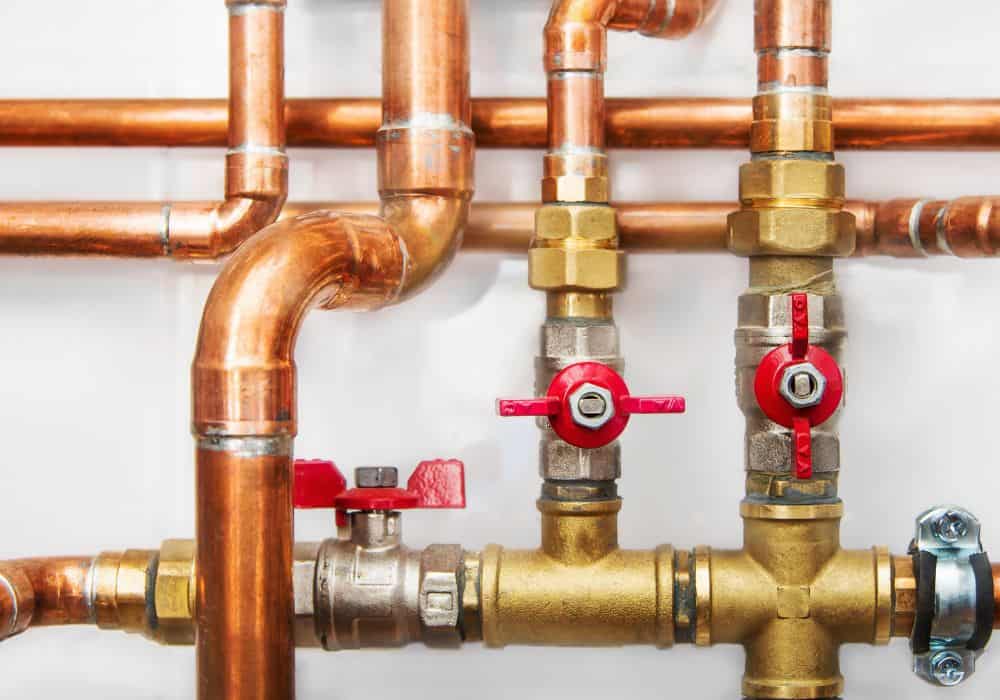Copper is one of the most common as well as oldest metals used for many types of piping – from drinking water to sewage pipes, and from ancient Egypt till today. In fact, copper pipes are one of the four most common types of piping in residential and industrial use today alongside galvanized steel pipes, CPVC, and cross-linked polyethylene (PEX).
But does this mean that copper pipes are as good as their alternatives or are they just affordable? How does their quality match up to other piping materials and how long does copper pipe last? The last point is especially crucial if you’re wondering when you might want to do a professional check-up for your home’s piping.
How long does copper pipe last?
Copper pipes are not quite as long-lasting as galvanized steel pipes but still have a significantly longer lifespan than non-metal piping materials such as PVC.
The average expected lifespan of high-quality copper pipes is about 70 to 80 years, although most conservative estimates put it around 50 years. Compared to the 80 to 100 years of galvanized steel and the 24 to 50 years of PVC, this is a pretty good life span for most industrial and residential needs.
However, the exact number you can expect to see depends on several factors such as:
- The type and quality of the water or other liquids flowing through the pipe
- The type and quality of the copper pipe itself
- How well you’ve taken care of the pipe
- Other environmental factors.
So, let’s go over the main types of copper pipes below as that’s the first thing you get to control.
The 3 main types of copper pipes and how long each type lasts
The thickness of your copper pipe is one of the main things that determines its durability and longevity. Depending on how thick your copper pipe is, it can fall into one of three separate categories – M-type piping, L-type piping, and the high-quality K-type pipes.
1. M-type copper pipes
The first type of copper pipe is the M-type. These are the thinnest copper pipes with the shortest lifespan, the lightest weight, and the most affordable price.
This doesn’t necessarily make them “cheap and sub-par”, however – M-type copper pipes are also very easy to handle, install, and repair thanks to their lightweight. And, despite their thin walls, they still have an expected lifespan of 24 to 50 years which is equivalent to that of PVC pipes.

2. L-type copper pipes
The L-type of copper pipes is the most common in both residential and industrial construction. It’s thicker than M pipes and the building code in most states even requires L pipes for most constructions. The thicker design of these pipes means a longer lifespan of multiple decades and a much lower risk of leaking and cracking.
3. K-type copper pipes
The highest-quality copper pipes are classified as K-type pipes. These pipes are extra thick, heavy, durable, and long-lasting. They are much better equipped to handle wear and tear but they are also heavier, more expensive, and more difficult to install and repair.
4. Rigid tubing vs flexible rolls
Last but not least, there is another key distinction between certain copper pipes and that’s based on whether they come in the form of rigid tubing or flexible rolls. The difference between the two is self-explanatory.
Pros and Cons of copper pipes

Pros:
1. Copper pipes are 100% recyclable and sustainable
A huge reason why copper water mains are still as popular as they are despite all of their more modern alternatives is just how sustainable and recyclable copper is.
2. Versatile and diverse options
Copper pipes come in multiple types, widths, and thickness options, and they can also be used in almost any commercial or residential situation.
3. Very lightweight for a metal
While copper pipes are obviously heavier than PVC pipes and PEX pipes, they are lighter than most other metal pipes. M-type copper pipes, in particular, are very easy to transport, handle, install, and repair.
4. As a noble metal, copper pipes are corrosion-resistant
Copper is a noble metal which means that it’s very durable against rust and other types of corrosion.

5. Very common and long-used material
Copper pipes have been used for literal millennia with some evidence found for water pipes used in ancient Egypt some 4,500 years ago. This isn’t just an interesting bit of trivia, it also goes to show how useful copper plumbing is.
What’s more, this also means that professional plumbers are very familiar with this type of piping, they know how to treat copper pipe leaks, and there is also a wide range of options and alternatives when it comes to pipe joints and other auxiliary tools and components.
6. Copper pipes don’t contaminate water supplies with harmful chemicals the way lead and cast iron pipes do
Lead and cast iron pipes are notorious for leading to poisoning people with harmful chemicals but that’s not really the case with copper pipes, especially when they are maintained properly.
Cons:
1. Copper pipes can add a slightly metallic flavor to drinking water
Copper water piping, while not as dangerous as lead pipes, can also leak metals into your water supply if the pipes are old and not maintained properly. That’s why it’s important to call a plumber to inspect your plumbing system and do the necessary pipe repair if you feel a metallic taste in your drinking water.
2. More expansive than PVC, PEX, and other non-metal piping materials
Copper pipes are typically more affordable than galvanized steel pipes but are also more expensive than most types of plastic pipes. That’s why PVC and PEX pipe replacements are usually chosen over copper pipes when people encounter sudden issues with old plumbing.

3. Internal corrosion is possible depending on the contents of the water flowing through the pipe
While copper is very resistant to many types of corrosion, the inside of a copper pipe can be corroded over time depending on certain types of exposure. High water pressure, high contents of minerals, highly acidic water, or an abnormally low pH level can all contribute to the health and longevity of your copper pipes.
For example, the infamous pinhole leaks in copper pipes often occur when you have hard water flowing through on a daily basis. Such water has high contents of dissolved magnesium and calcium minerals in it which lead to copper corrosion. Pinhole leaks are not untreatable, of course, nor are they unique exclusively to copper pipes.
4. DIY copper pipe installations and repairs are complicated and ill-advised
Another big reason why non-metal plumbing is often preferred over even M-type copper pipes is that people can DYI non-metal pipes but often need to call professional plumbers when they need to install or fix metal piping. So, if you don’t want to have to call professionals from time to time, PVC or PEX piping can be easier to deal with.
When do you need a check-up for your home’s copper piping – 3 signs
Pipe maintenance is annoying and one of the things homeowners and business owners alike prefer to postpone as much as possible. Needless to say, that is a bad idea and the occasional routine pipe check-up is a must if you want to avoid problems.
Ideally, you should do this once every couple of years even if you don’t see any problems in your home’s piping. However, even if you really don’t want to bother or if it’s only been a few months, there are some signs you should never ignore:
1. Water discoloration
If the insides of your copper pipes have started to suffer from some corrosion, the metallic aftertaste in your water will soon be followed by water discoloration, usually toward brown or even black water.
2. Low water pressure
Low water pressure can be caused by various things such as clogging faucet issues, and more. Another likely explanation is pipe leaks or pinholes, however, which is a cause for pipe maintenance.
3. Physical issues on exposed pipes
Most piping installations both in residential and industrial settings will have at least a few exposed pipes, usually in the bathroom or basement. Checking up on the health of those pipes is a good idea as they can indicate when it’s time to call a professional for a routine check-up. Things such as bumps, flaking, or dimpling on those pipes are tell-tale signs that something is wrong.
In conclusion – how long does copper pipe last and should you consider it for your home?
Copper water pipes are a mainstay in industrial and residential plumbing for a lot of good reasons such as their great quality, relative affordability, safety, as well as their good overall life span. Every once in a while you are going to need a replacement for your copper pipe, however.
On average, a copper pipe is expected to last over 50 years if it’s of a good quality and is maintained properly. Thinner pipes are expected to last less – between 24 and 50 years – and in extreme cases a copper pipe can get ruined in as little as 5 years if it’s mishandled.
Whether that’s once every 5 or 75 years depends on the quality of the water flowing through the pipe as well as the routine check-ups and maintenance you provide. So, if it’s been a while since you last checked your copper pipes, it’s wise to do so sooner rather than later.
